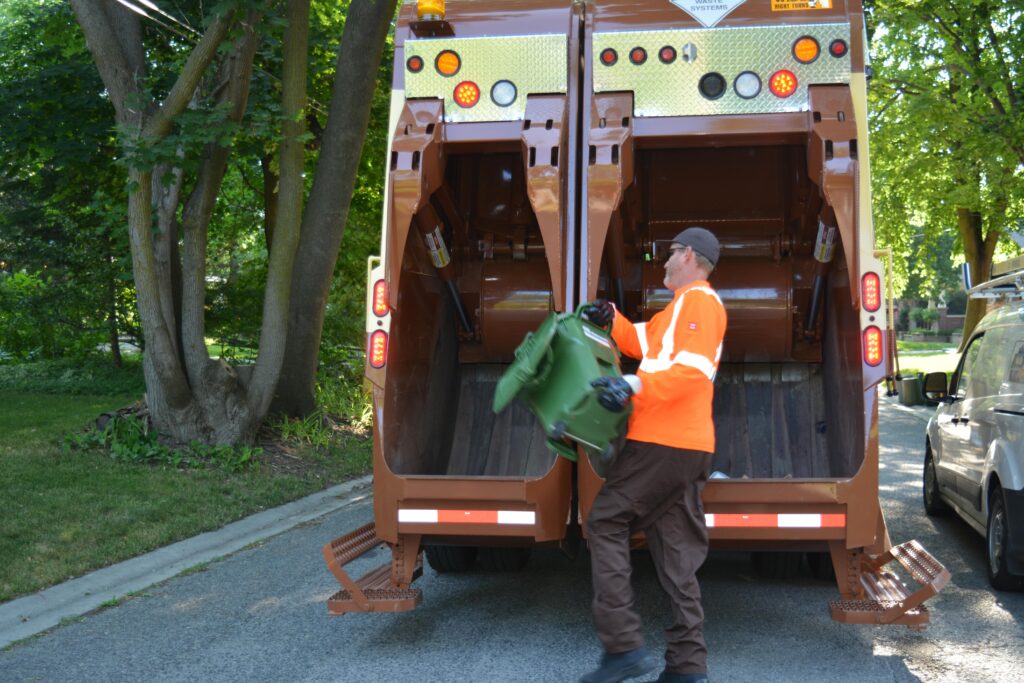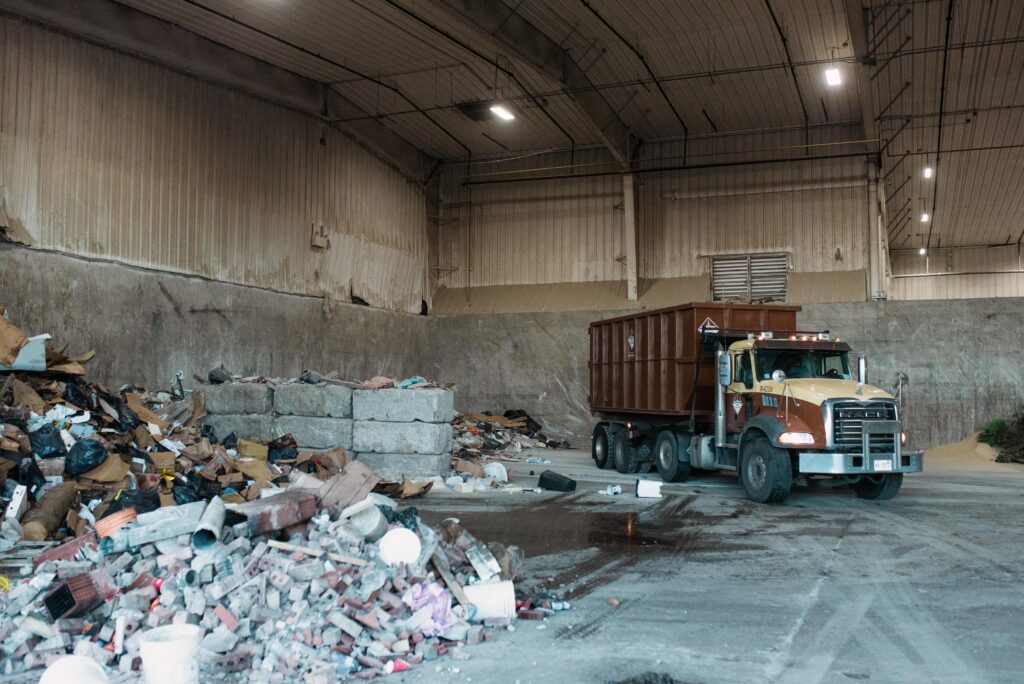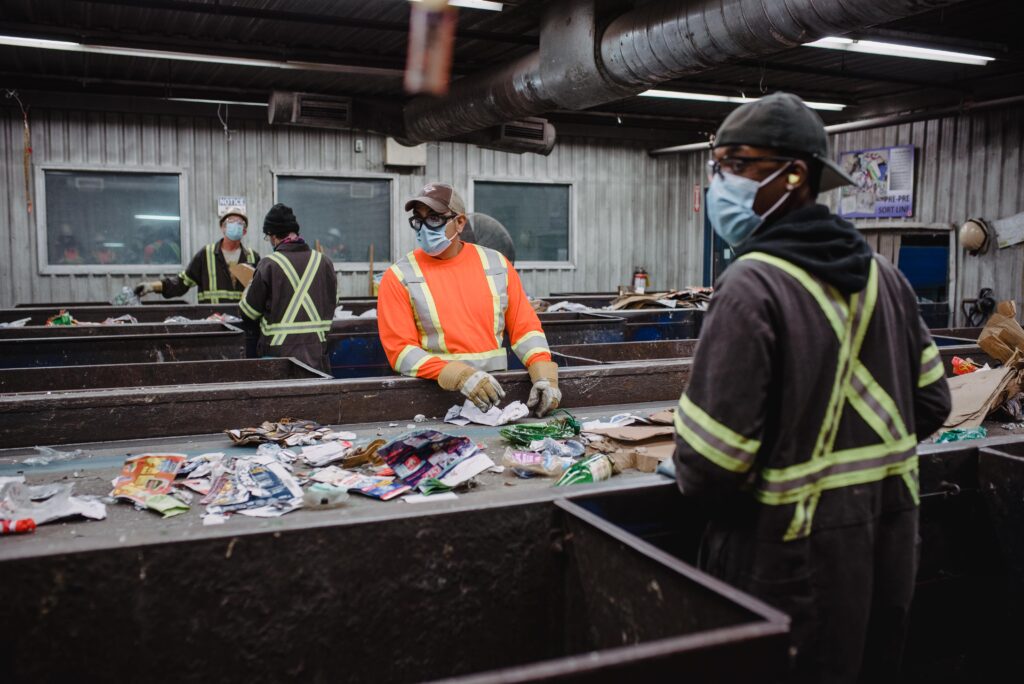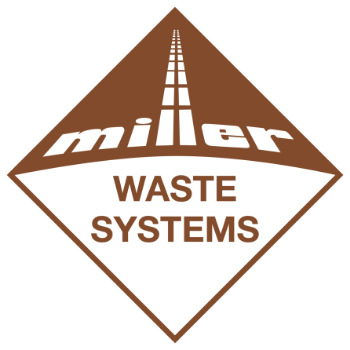“Out of sight, out of mind” is the adage we most commonly apply to waste. Once we’ve tossed a banana peel into the bin or hauled our blue boxes to the bottom of our driveway, we usually don’t give them a second thought. However, we also see and hear massive garbage trucks making their rounds through our neighborhood every week, begging the question: just what does Miller do with all the waste? It must go somewhere, right? Here’s an overview of how it works:

Collect
Municipalities hire waste management companies such as Miller Waste to collect, haul, sort, and process recyclable material on their behalf. Private corporations and government facilities may also commission waste management companies to supply dumpster bins on their sites and empty them according to a regular schedule.
Waste management companies often use the familiar rear-load garbage trucks to collect curbside waste from houses (and some storefronts, in certain jurisdictions). Collection service representatives toss garbage, recyclables, and organic waste into the back of the truck where a compactor compresses the waste to maximize available space.
Separate

Collection vehicles unload waste at transfer stations so staff can recover material that has been mistakenly discarded as trash; that is, items with components or material that can be re-used, re-processed, or recycled or have special disposal considerations.
Scale house operators weigh incoming collection trucks to determine tipping fees, which are fees paid by anyone who disposes of waste in a landfill. Tipping fees offset the cost of maintaining a landfill and keeping it compliant with provincial and federal regulations.
Using cranes, bulldozers, and backhoes, workers screen and separate food waste, large appliances, including ovens and washing machines, batteries, wood, and more from the trash destined for the landfill.
Trash, recyclables, hazardous material, and organic waste may be compacted before it is loaded onto large tractor trailers to be hauled to the appropriate destination: trash goes to the landfills, recyclables go to MRFs, organic waste is sent to a composting or waste-to-energy facility, and hazardous waste goes to a facility it can be safely processed and disposed of.
Modern transfer stations are designed to minimize blowing litter, control spills, and collect wastewater. They are an essential component of responsible waste management because they ensure maximum diversion of unnecessary waste from the landfill.

Recycle
Officially called Material Recovery Facilities (MRFs), these waste management facilities are outfitted with advanced equipment to sort different kinds of recyclable material from one another so they can be sold to end-market buyers and made into new products.
Upon entering the MRF, trucks dumps recyclables onto the tipping floor where they are scooped up and placed on conveyor belts that lead to the pre-sorting area. Sorting staff manually remove items from the stream that are not recyclable, are potential hazards that can spark fires (lithium batteries, aerosol cans) or become entangled in the equipment (plastic bags and hoses).
Another conveyor belt transfers the remaining material to a disk screen, where machinery separates wide and flat recyclables (cardboard boxes) from other items, such as cans, jars, bottles, and paper.
Workers manually remove contaminants from the flattened cardboard belt, while the cans, jars, bottles, and papers fall into another area where large blowers separate paper from the rest of the material. Specialized equipment separates steel and aluminum from other recyclables, while infrared technology separates plastics by polymer type. Many commodities are then baled to facilitate easy transportation to end-market buyers.
Compost
Composting facilities receive and transform leaf and yard waste into landscaping and gardening products, including mulch, soil, and top dressing. High-speed grinders shred yard waste and it is uniformly arranged into composting windrows where microbes break down the organic matter to create compost and other soil enhancers.

At waste-to-energy facilities, such as Escarpment Renewables, municipal and commercial organic waste is ground into a slurry and deposited in anaerobic digestors. These are vats where microbes “digest” the organic material in the absence of oxygen. The byproducts of the digestion process are biogas (which can be used to power homes with electricity), and a nutrient-rich liquid fertilizer known as digestate.
What about hazardous waste?
To prevent harmful substances with the potential to negatively impact human and animal health from entering the air or water supplies, it is imperative that hazardous waste is properly processed and disposed of. Some kinds of hazardous waste can be recycled and re-purposed.
The waste management process contains multiple steps that were designed to protect the environment and human and animal health. Different waste types are separated from one another to minimize the amount of unnecessary material sent to the landfill and maximize the value of recyclable and recover material before it reaches the end of its service life.
As you can tell, collecting waste is just the tip of the iceberg when it comes to comprehensive waste management!
